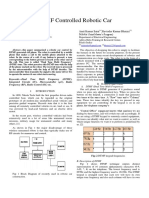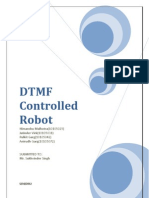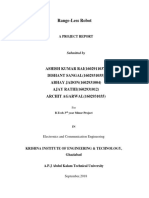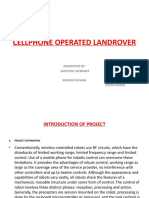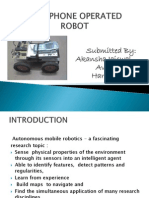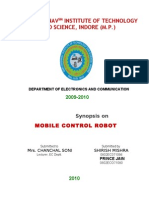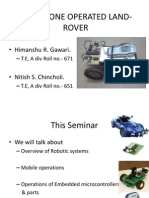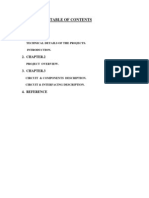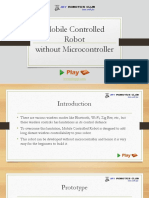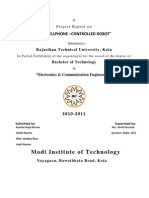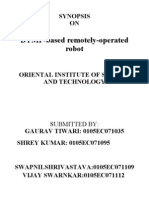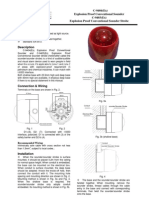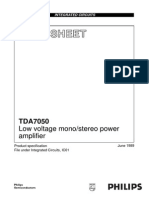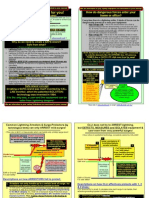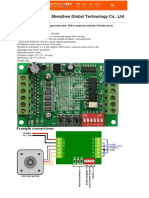0% found this document useful (0 votes)
82 views22 pagesRobotics Mobile Controlling Device
1) The document describes a cell phone operated robot called Orbot that is controlled via dual tone multi-frequency (DTMF) tones sent from a mobile phone acting as the transmitter to a mobile phone attached to the robot acting as the receiver.
2) When buttons are pressed on the transmitting phone, corresponding DTMF tones are sent and received by the robot's phone, decoded by a microcontroller, and used to drive motors to control the robot's movement.
3) Using mobile phones allows robust wireless control over a large area without interference, overcoming limitations of conventional radio-controlled robot circuits.
Uploaded by
Rocking HappyCopyright
© © All Rights Reserved
We take content rights seriously. If you suspect this is your content, claim it here.
Available Formats
Download as PPTX, PDF, TXT or read online on Scribd
0% found this document useful (0 votes)
82 views22 pagesRobotics Mobile Controlling Device
1) The document describes a cell phone operated robot called Orbot that is controlled via dual tone multi-frequency (DTMF) tones sent from a mobile phone acting as the transmitter to a mobile phone attached to the robot acting as the receiver.
2) When buttons are pressed on the transmitting phone, corresponding DTMF tones are sent and received by the robot's phone, decoded by a microcontroller, and used to drive motors to control the robot's movement.
3) Using mobile phones allows robust wireless control over a large area without interference, overcoming limitations of conventional radio-controlled robot circuits.
Uploaded by
Rocking HappyCopyright
© © All Rights Reserved
We take content rights seriously. If you suspect this is your content, claim it here.
Available Formats
Download as PPTX, PDF, TXT or read online on Scribd
/ 22











